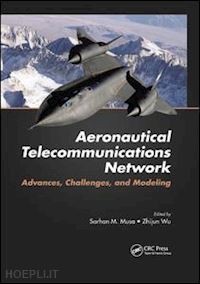Addresses the Challenges of Modern-Day Air Traffic Air traffic control (ATC) directs aircraft in the sky and on the ground to safety, while the Aeronautical Telecommunications Network (ATN) comprises all systems and phases that assist in aircraft departure and landing. The Aeronautical Telecommunications Network: Advances, Challenges, and Modeling focuses on the development of ATN and examines the role of the various systems that link aircraft with the ground. The book places special emphasis on ATC—introducing the modern ATC system from the perspective of the user and the developer—and provides a thorough understanding of the operating mechanism of the ATC system. It discusses the evolution of ATC, explaining its structure and how it works; includes design examples; and describes all subsystems of the ATC system. In addition, the book covers relevant tools, techniques, protocols, and architectures in ATN, including MIPv6, air traffic control (ATC), security of air traffic management (ATM), very-high-frequency (VHF) digital link (VDL), aeronautical radio and satellite communications, electromagnetic interference to aeronautical telecommunications, quality of service (QoS)-satisfied ATN routing mechanism speed dynamic environments, and service-oriented architecture (SOA)-based ATN transmission control algorithm. It also incorporates published research and technical reports to illustrate existing problems, highlight current methods and opportunities, and consider future directions and trends. The authors: Provide an overview of ATN Illustrate the composition of the ATC system Explain how to design an ATC system Reveal how to use an ATC system to control in-flight airplanes Present the results of author research on spatial mitigation Introduce the electromagnetic interference effects and response measures of aviation communications equipment Analyze the protective measures of aircraft and ground stations against electromagnetic interference The Aeronautical Telecommunications Network: Advances, Challenges, and Modeling highlights the advances, challenges, and modeling of ATN, and implements strategies for integrating existing and future data communications networks into a single internetwork serving the aeronautical industry. This book can aid readers in working to ensure the effective management of air traffic and airspace, and the safety of air transport.











